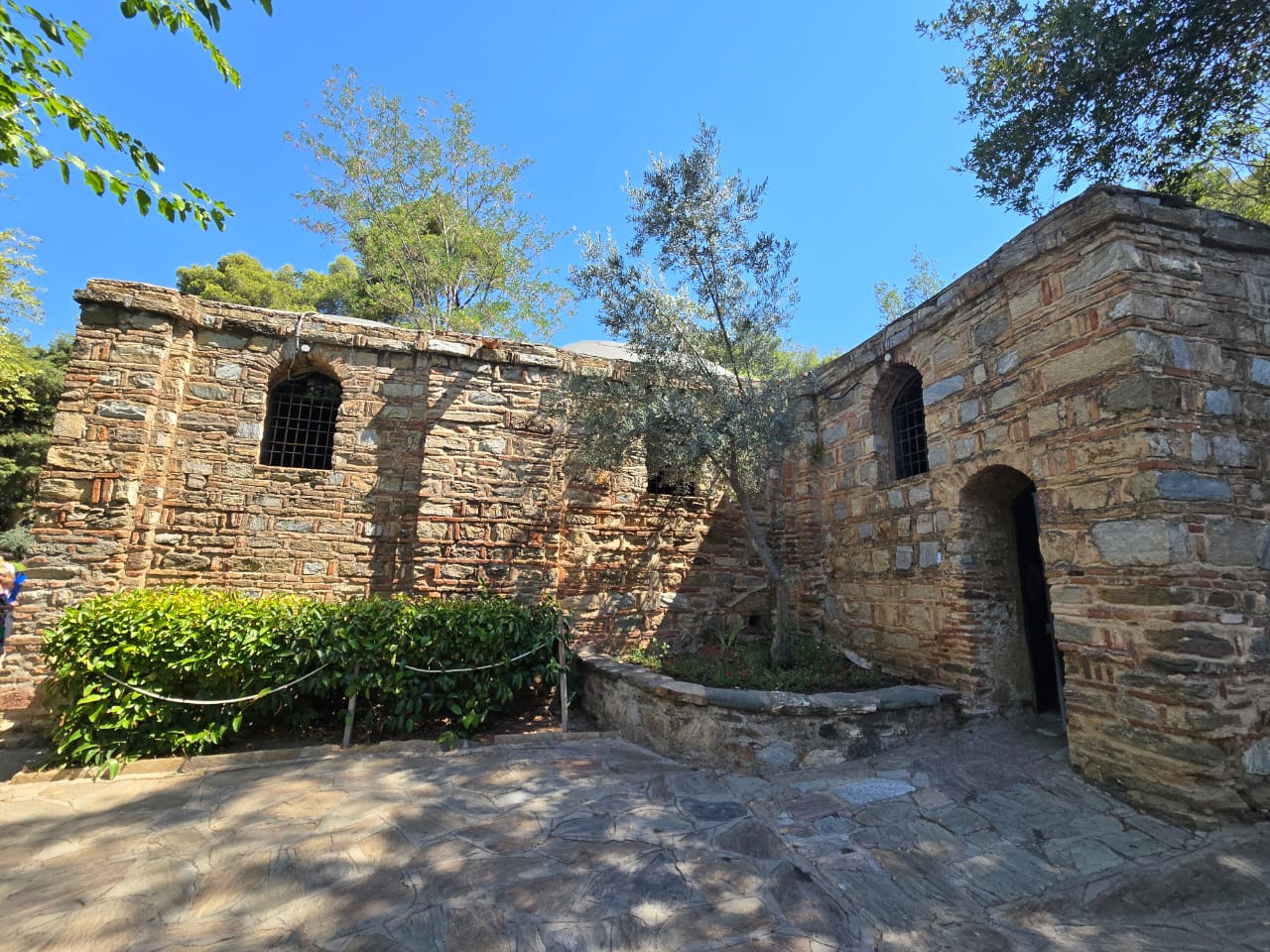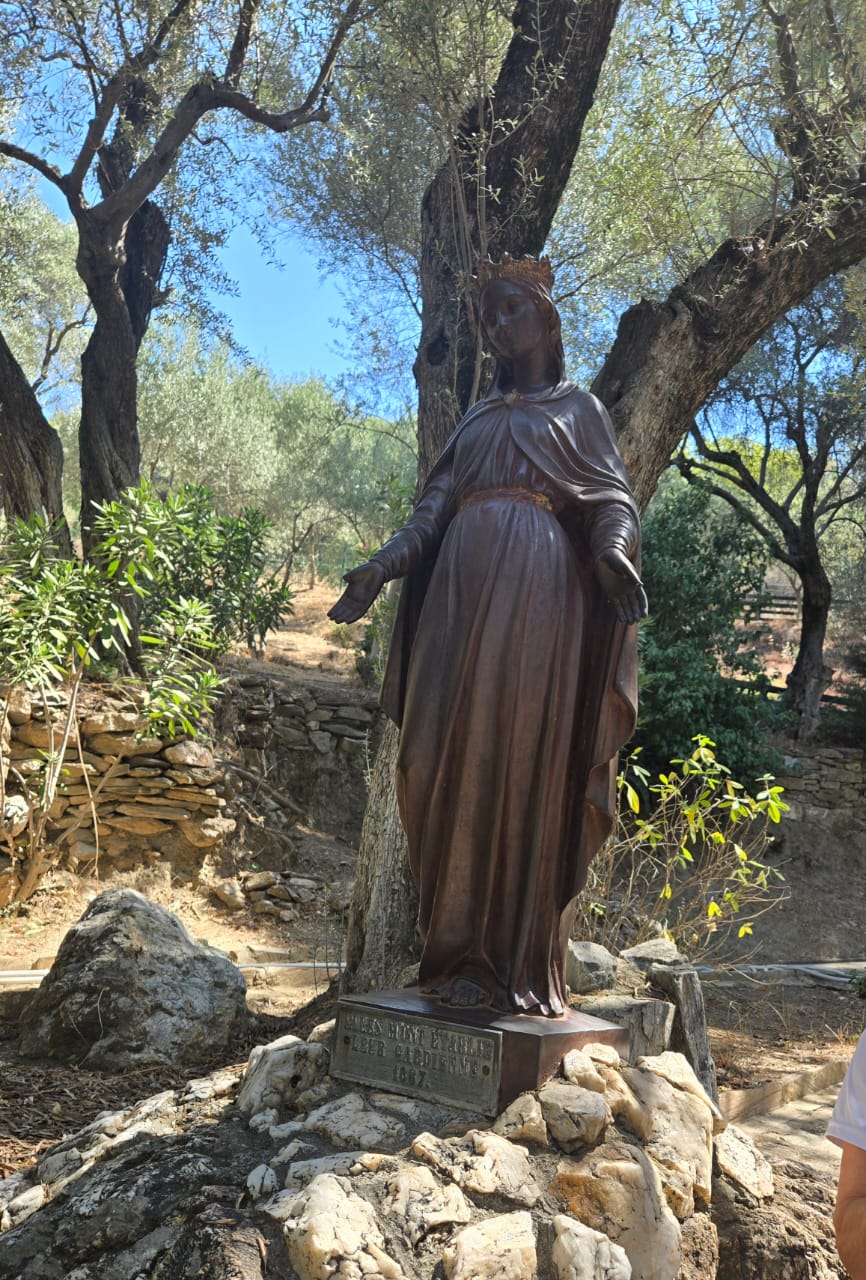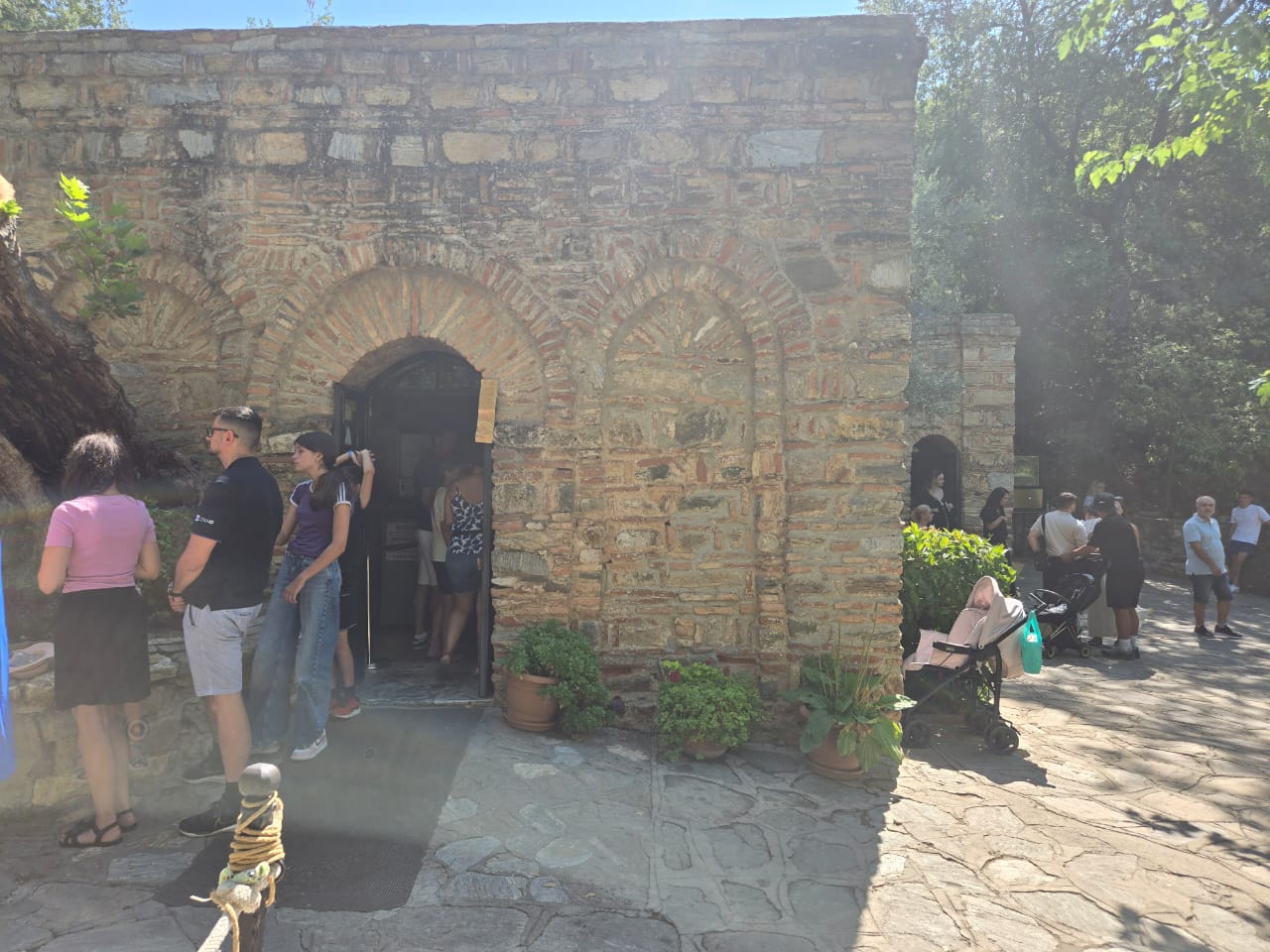
High on a hill near Ephesus, among ancient olive trees and the whispering wind, lies a sacred place that seems frozen in time: the House of the Virgin Mary.
The old stone structure, humble yet strong, welcomes visitors with a serene energy. Its weathered walls have absorbed centuries of silent prayers and hold the echo of stories passed down through generations. It is believed that Mary, the mother of Jesus, spent her final days here, accompanied by the Apostle John.
Outside, a small garden surrounds the house in vibrant green. A tree stands beside the entrance, as if guarding the space. The place invites one to walk slowly, to breathe deeply, and to let the soul grow still.
Not far away, among the trees, a statue of the Virgin Mary stands with her arms open. Her face radiates peace. The stone base bears an inscription that recalls the devotion with which it was placed there—as a symbol of faith and love.
Visiting this corner of the world is not just about seeing an ancient structure; it is about connecting with a living story, with a maternal figure that transcends religions and borders. It is about allowing the heart to listen to what the stones, the trees, and the silence still have to say.

En lo alto de una colina cercana a Éfeso, entre olivos centenarios y el susurro del viento, se esconde un lugar sagrado que parece detenido en el tiempo: la Casa de la Virgen María.
La antigua construcción de piedra, humilde pero firme, recibe a los visitantes con una energía serena. Sus muros, envejecidos por los siglos, guardan el silencio de muchas oraciones y el eco de historias que se han contado generación tras generación. Se cree que aquí pasó sus últimos días María, la madre de Jesús, acompañada por el apóstol Juan.
Afuera, un pequeño jardín abraza la casa con su verdor. Un árbol crece junto a la entrada, como si quisiera custodiar el espacio. El lugar invita a caminar lento, a respirar hondo y a dejar que el alma se aquiete.
No muy lejos, entre los árboles, una estatua de la Virgen María se alza con los brazos extendidos. Su rostro transmite paz. La base de piedra lleva una inscripción que recuerda la devoción con que fue colocada allí, como símbolo de fe y amor.
Visitar este rincón del mundo no es solo conocer una construcción antigua: es acercarse a una historia viva, a una figura maternal que trasciende religiones y fronteras. Es permitir que el corazón escuche lo que las piedras, los árboles y el silencio aún tienen para decir.

Las fotografías fueron sacadas en el lugar por mi amiga Maria Julia qué está pasando unas hermosas vacaciones.